Have you ever wondered how successful SaaS companies develop and maintain relevant products that earn their customer’s loyalty?
One of the many factors of their success is their strategy in utilizing public-facing product roadmaps.
These companies engage their customer base by bringing them into the process of development. When you, as a customer, want a specific feature or tool added to the service, you are empowered to request it.
Keep reading to learn more about SaaS product roadmaps and how Aware, Microsoft, and Buffer use them to raise customer satisfaction, improve communication, and increase productivity.
Understanding SaaS Agile Product Roadmaps
Public SaaS product roadmaps communicate the future of a product. It visualizes your product development strategy and allows team members, stakeholders, and sometimes customers to brainstorm, create, update, and announce the completion of individual business goals and tasks.
Many companies don’t share their roadmaps with the public and instead, opt to share their product development via social media and blogs. This has its advantages and disadvantages.
On the one hand, keeping up with customer suggestions can create a lot of work and can make it challenging to devote time to the bigger picture. Responding to small issues might make a gradual impact, but sometimes, companies need the space to envision a new initiative.
On the other hand, not having a public-facing roadmap could lead to your product development not aligning with your customer’s needs.
Some companies, like Slack, do share their product roadmaps, but only at pivotal moments when collaboration and feedback are needed.
For example, in 2016, Slack made its Trello-designed roadmap publicly accessible. They’ve since taken it down, choosing a blog and changelog to communicate updates instead. Still, the roadmap helped them to grow a strong and loyal customer base.
But there are also a few companies who choose to create a permanent public-facing roadmap where customers and team members alike can contribute. But why exactly do they do it?
Why a Public SaaS Roadmap Is a Good Idea
These public-facing roadmaps help to unite the company’s vision for their product, help them to prioritize features based on customer demands, and they help communicate progress and results with unmatched clarity and efficiency.
The clarity roadmaps provide can boost customer satisfaction and retention.
Depending on the reach of your business, you may need to consider how the amount of customer interaction you can handle, and what types of customer interactions will help or hurt your business.
The general idea, though, is that if your customer base is on the smaller side and the services you offer are highly customizable, you may be able to handle more extensive feedback from many of your customers. With a larger number of customers, however, you may need to limit the amount of access the public has to your workflow.
We’ll start with the smallest scale example, Aware, a startup with less than a thousand users. Then, we’ll take a mid-sized firm, Buffer, which has around 75 thousand users. For a larger-scale of product roadmap example, we’ll take a look at Microsoft 365, which has over 300 million users.
Aware
Aware offers a service that manages your LinkedIn feed. This includes features like creating focused and/or collaborative feeds, responding to comments, and getting analytics on engagement.
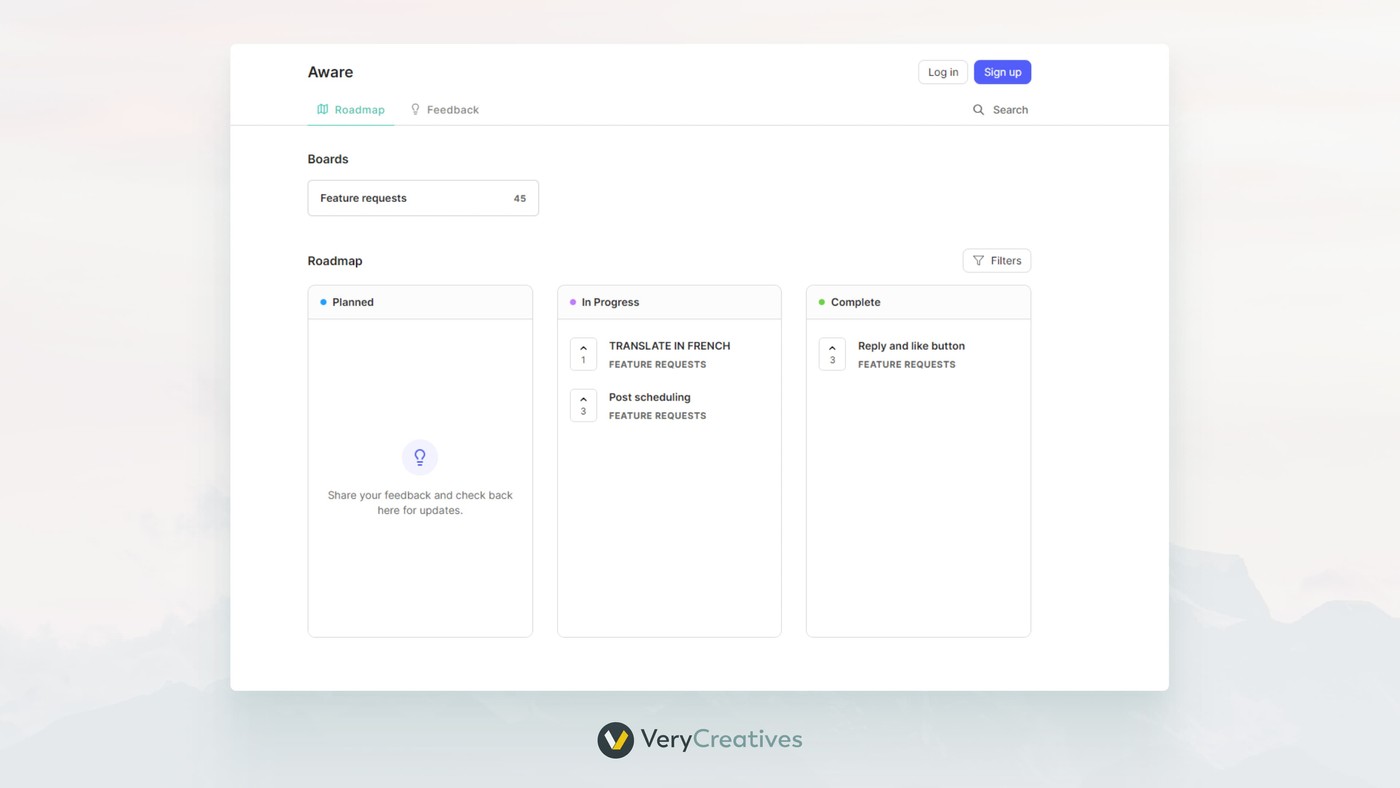
Founded in 2021, Aware is fairly new to SaaS landscape, but they are already growing rapidly. Their public-facing roadmap reflects their growing appeal.
The roadmap consists of three easy-to-understand categories: Planned, In Progress, and Complete. Users can simply click on the “Feedback” button, and then they are prompted to request a feature.
This feature is loaded into the “Feature Requests” system, where other users and team members can comment on the recommendation. Then, it will move through the rest of the roadmap.
Due to their smaller size, they are able to offer unparalleled customer access to the development team.
Let’s take a closer look at one of these feature requests.
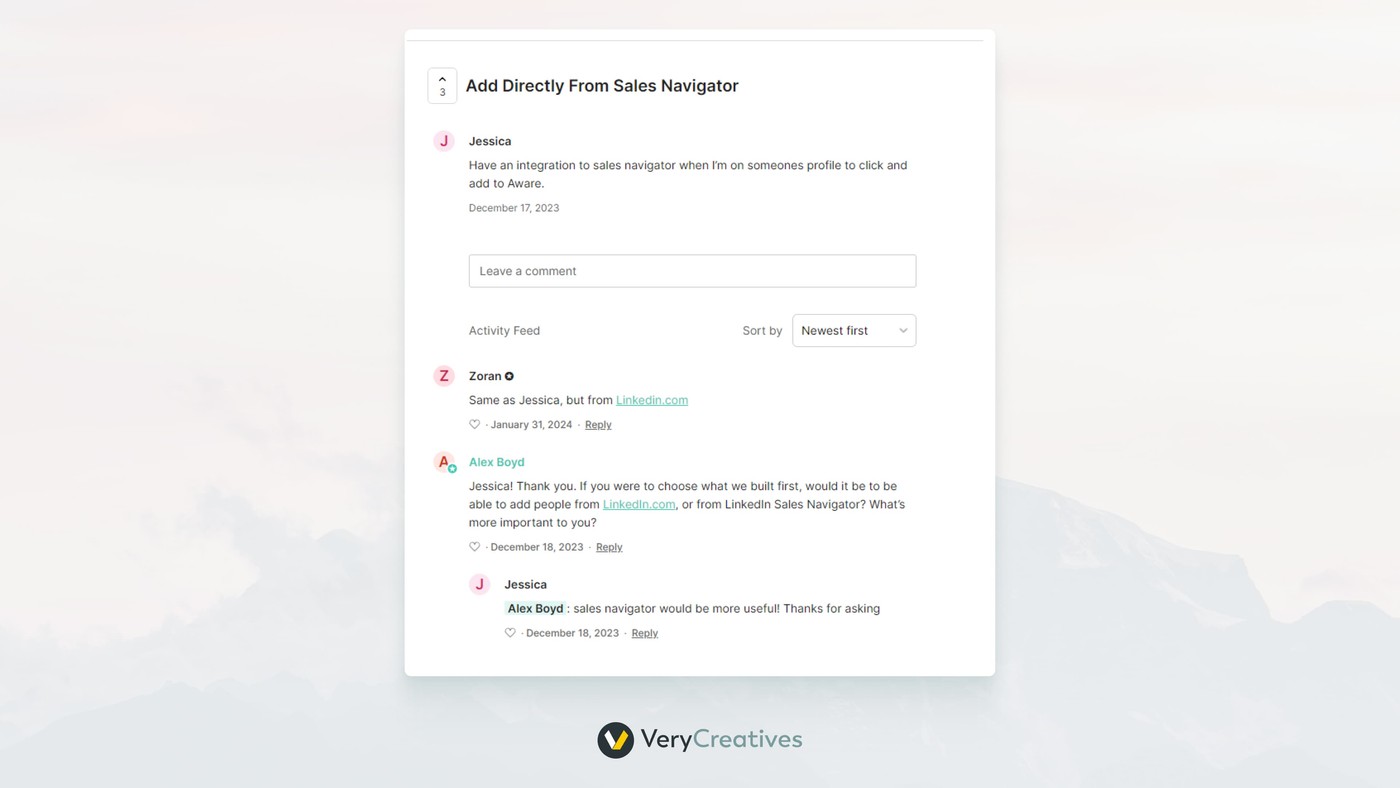
Here, a user requests the ability to quickly add users to Aware when browsing LinkedIn through LinkedIn Sales Navigator, a LinkedIn addon that helps businesses identify potential customers.
Another user seconds this request and clarifies that he wants access to this feature from LinkedIn.com.
Mac Martine and Alex Boyd, founders of Aware, respond only one day after the user’s request. They want clarification on prioritizing between integrating the Sales Navigator or LinkedIn.com. Clearly, they think it’s a great idea.
Given the small number of users, Aware’s management team can take the time to engage with customers, and this kind of interaction strengthens customer loyalty. Imagine being able to discuss your needs with the CEO of every company you interacted with!
Perhaps more importantly, Boyd’s message on the roadmap sets the tone for the rest of the team. Any member of the team can easily access the roadmap and understand what issues are most pressing and where they are in the process of development.
During the process of developing the product roadmap, it is certain to become increasingly complex. For example, as the company is fairly new, they don’t yet have a clear system for communicating the features that they have decided they cannot pursue, which means they may be susceptible to repeated requests.
Mac Martine says “We started out on a mission to make Aware the best LinkedIn tool for creating authentic interactions at scale. We now have robust analytics, and native CRM integrations, and so much more, all of which have been guided by the needs of our customers.”
We’re building this for them, and we feel we can only do this if we treat each customer as a friend, and listen to each one individually, and we’ll continue to do that for as long as we’re able. - Mac Martine, Aware
Let’s take a look at Buffer, who offers a more complex roadmap.
Buffer
Buffer is a social media management SaaS that offers subscription plans intended for individuals and businesses. With the help of their personal dashboard, users can schedule and publish posts across several social media platforms, and then access analytics to help them track and review their reach.
Given the constantly evolving landscape of social media, Buffer must make frequent updates to their services and communicate these upgrades to their subscribers.
To accomplish this, Buffer uses a public-facing roadmap that illustrates their planned feature release date, tracks development in progress, allows users to submit requests, and shows completed updates. The roadmap is sorted into five groups: In Review, Planned, In Progress, Shipped, and Leaving for Now.
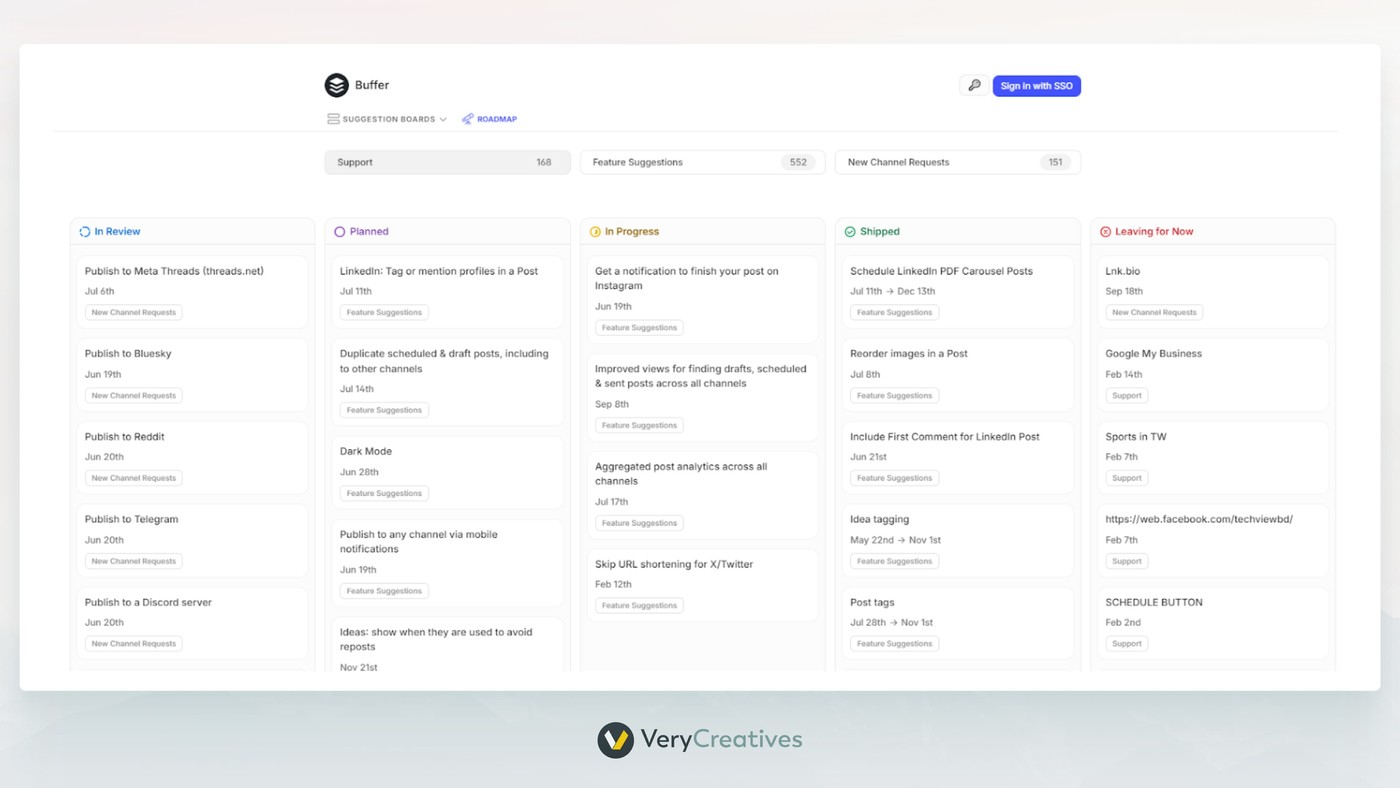
Buffer users and team members can click a “Suggest a Feature” button to fill out a form detailing “What are you trying to do that you are currently unable to?” This simple, straight-forward question encourages customers to participate, knowing that they don’t have to fill out a long, drawn-out form just for a quick comment.
Team members merge related suggestions into a single card for the In Review group, so that there is a space for all stakeholders (product managers, software engineers, customers, management, etc) to comment on whether they think the feature is a good idea.
Also, they can add more details or errors associated with the detail, and people can weigh in on whether the feature is actually technologically feasible.
When a date is set, they’ll move the card to the Planned column and eventually to the In Progress and Shipped columns. Or, they’ll explain why the feature is not currently possible and move the card to the Leaving for Now column.
Let’s take a closer look at one feature request to get a better sense of the process.
Seven months ago, a user clicked the Suggest a Feature button and requested that Buffer offer support for LinkedIn Carousels—the ability to automatically transform a pdf file into a slideshow on a LinkedIn post.
A Buffer team member noticed the post and mentioned that he thought it was a good idea and merged the card with others and marked the card for In Review. Several other Buffer users commented about how they use workarounds and competitors to accomplish this and they expressed the need for support within Buffer.
About a month later, a Buffer team member added that they determined this feature was theoretically possible, but that support for this feature would require reconfiguring their approach to media files.
Over the next few months, users continued to reiterate their need for this feature and team members continued to respond that they were working on it, moving it through the Planned and In Progress columns.
Two months ago, they were able to move it into the Shipped column and tag all the users who requested it with the good news that the update had launched.
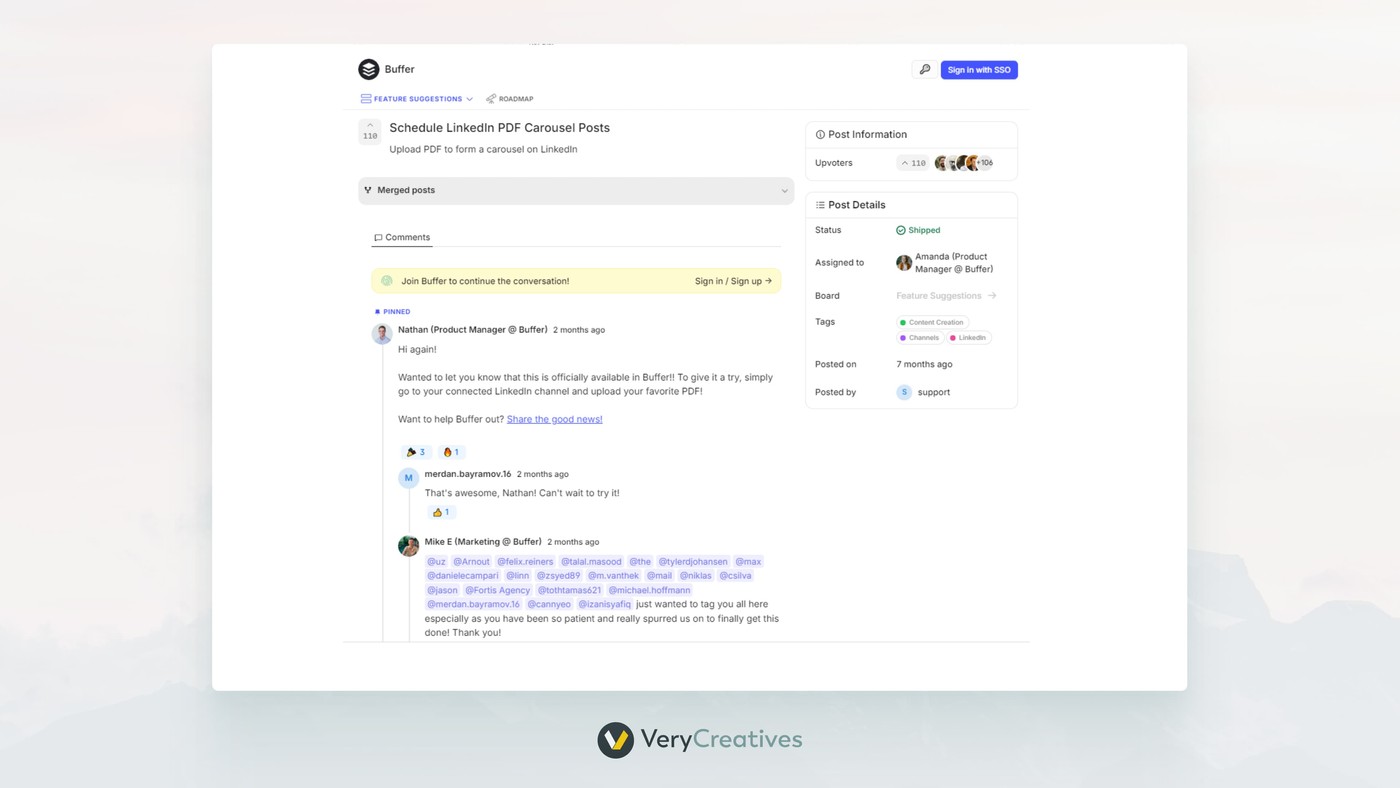
Buffer’s approach to their public-facing roadmap clearly strengthens the relationship between user and platform—users feel as if their concerns are being truly considered and valued.
This helps with customer retention. Users are more likely to renew their subscriptions if they believe that the service will continue to evolve with their needs.
Perhaps even more importantly, the roadmap pushes the team to continue to expand and develop their vision—they stay competitive within an ever-changing market.
Microsoft 365
Microsoft 365 is a cloud-based suite consisting of over 40 different products, including: the Microsot Office applications (Word, Excel, PowerPoint, etc), Outlook applications (email, calendar, web storage), and Collaboration applications (Teams, SharePoint, Power Platform, etc).
There are too many applications to list, which means that users will have pain points, feedback, and suggestions on thousands of features.
So, Microsoft 365 opts for a simple Kanban-style roadmap that contains three categories: In Development, Rolling Out, and Launched. When a category is clicked, you see an exhaustive list of every feature currently in that phase of development.
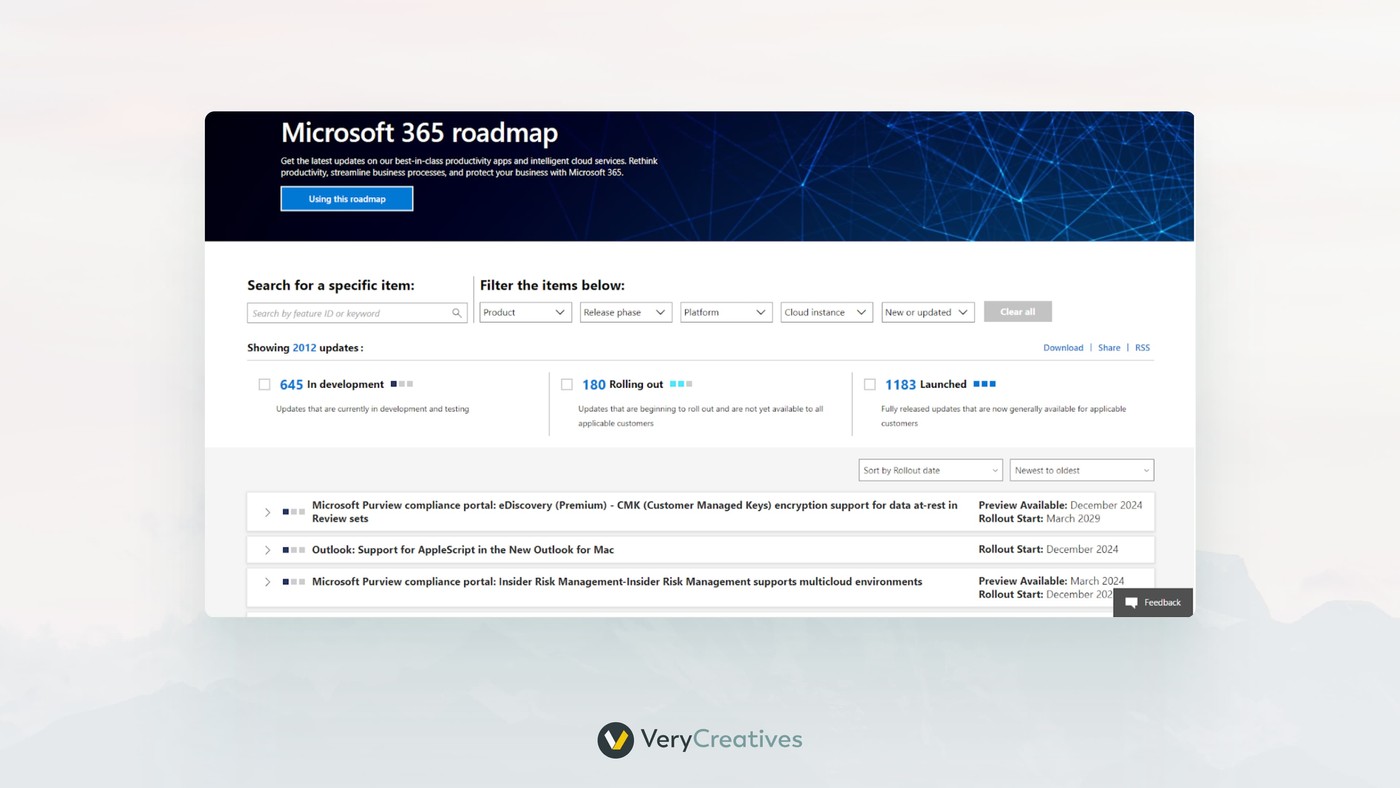
As you can see in the image above, there are 645 features currently sorted into In Development, a list that is likely too long to read.
Microsoft cleverly includes a filter—you can select one or more products from a list of a total of 46, to limit the roadmap to only the issues you find relevant. Or, you can use the search box to pinpoint exactly what you are looking for.
Let’s take a closer look at how the roadmap works by working through a hypothetical suggestion.
Say, for example, you love the feature in Outlook that reminds you to send a reply to an email by moving it back to the top of your inbox.
You have an idea for customizing this feature even further: what if Outlook could determine the most helpful time for this reminder based on your email history, and then customize the reminder for each recipient?
For example, if your boss emails you, you typically respond within a couple of hours. But if someone from outside of your company emails you, you typically respond within a couple of days. To start the process, you would first search for the feature on the roadmap.
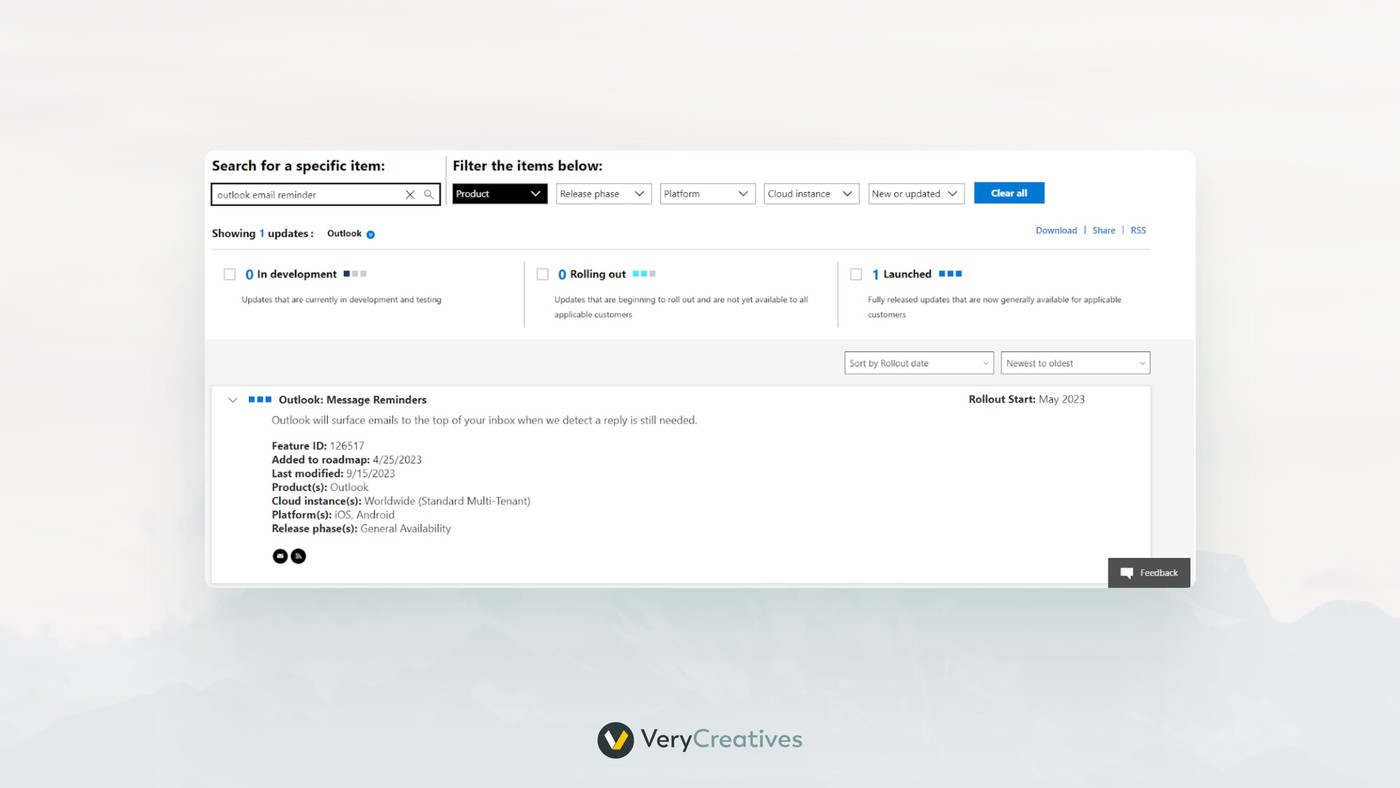
As you can see, the Outlook: Message Reminders feature launched in May 2023, and it has a Feature ID number of 126517.
Then you can simply click the Feedback button in the bottom right corner, paste in the Feature ID number, and describe your idea. After you submit the task, the Microsoft team will determine whether it is feasible, and will continue to update the card on the roadmap.
By clicking the RSS button at the bottom of the card, you can easily add it to one of your feeds to keep track of updates.
Though not visible to customers, the Microsoft team has an internal system to actually manage the process of releasing a feature. This system allows them to assign the project to specific employees, set deadlines, comment, and move the project from team to team until it is ready for launch.
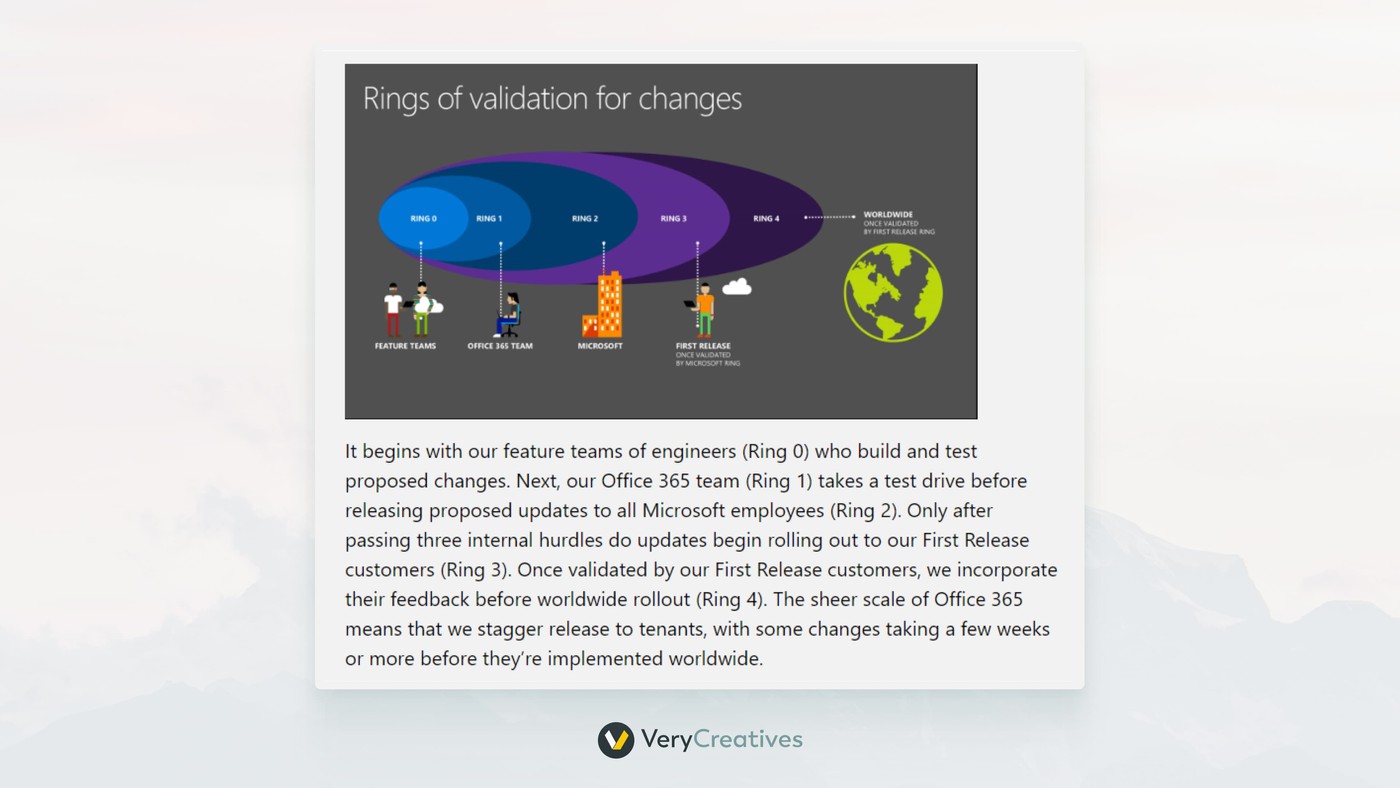
As you can see Microsoft 365 uses both internal and external roadmaps to help visualize their product development, leading to an enormous amount of collaboration and productivity. The team manages to launch over 750 updates each year.
Summary
Though Buffer and Microsoft 365 take different approaches to their public-facing SaaS roadmaps, they both clearly benefit from the customer interaction it fosters.
These companies do not view their customer’s pain points, complaints, and suggestions as challenges or distractions in the development process. Instead, they let the customer’s voice be an endless well of inspiration and urgency to continuously improve and evolve their products.
Book a free call today to talk with someone about how to put public-facing SaaS roadmaps to work for your business.